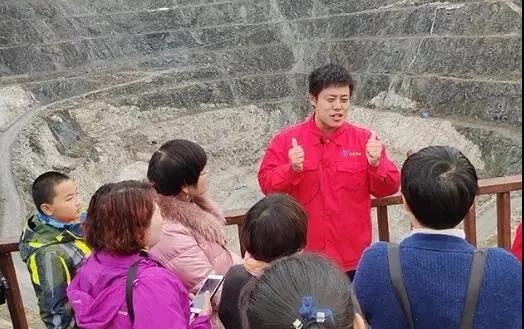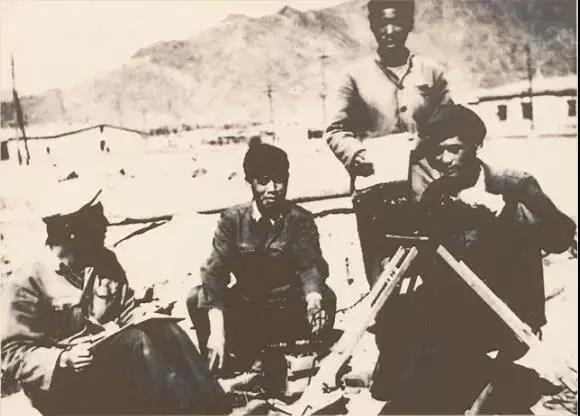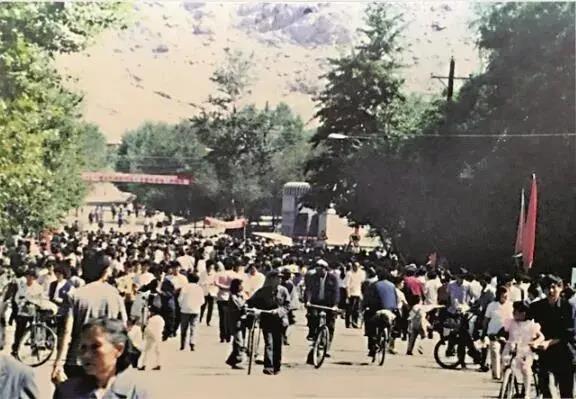- Keketuohai UNESCO Global Geopark will resume...
- Training helps Keketuohai continue to progre...
- Felt house,Museums on the Move
- Beautiful Folk Village - Talat Village
- The Irtysh Grand Canyon
- What you must know about the Keketuohai mini...
- Konglong Valley-You can see all four landsca...
- Escape the city and cross the Keketuohai
- Partners help geopark tourism development
"You are now in the location of the Keketuohai Rare Metals National Mining Park, but also my grandfather, my father and I, a family of three generations of people work, live in the place ......" in the face of a group of tourists who have just arrived at the mining park, Tan Shengli said.
This year's 33-year-old Tan Shengli is Keketuohai Rare Metals National Mining Park Operations Manager, leisure time, he will "part-time" to do the narrator, for tourists to tell the first generation of miners in minus 40 degrees Celsius cold weather, in the open-pit mines hand-selected ores, shoulder picking and carrying of the entrepreneurial story.
In Tan Shengli's explanation, he likes to use the "sea of change" to describe the Keketuohai Rare Metals National Mining Park changes over the decades, the Tan family's three generations of life has also changed with the changes in the Keketuohai mine.

Born out of the mine, hard work on shoulders and backs
In the 1930s, Keketuohai was still a primitive pastoral area, and in 1935, a world-class "bowler hat"-shaped super-large rare metal deposit surfaced. The third vein of Keketuohai alone contains 84 kinds of rare minerals such as lithium, beryllium, tantalum, niobium and cesium, and is known as a "natural geological museum".
In 1952, Tan Shengli's grandfather, Tan Qiye, was 27 years old and had already started a family in Shandong. When he heard that life was better in Xinjiang, he took his wife and children to Keketuohai Town to join his relatives.

In 1955, all enterprises in the Keketuohai mining area were directly under the management of the central government. The "mining fever" was in full swing in Cocotocai, and Tan Qiye successfully became a miner, mainly responsible for transporting ore from the mountain to the bottom of the mountain. He and his fellow workers loaded the ore onto ploughs or baskets, and then sent it down the mountain on horses, donkeys or on their own shoulders.
Under the joint efforts of Tan Qiye and other first-generation miners, minerals such as beryllium, lithium, tantalum and niobium, which are rare metals, were continuously extracted and transported out. The Keketuohai produces more than 80 of the more than 170 known useful minerals in China, and has provided valuable raw materials for the development of the aerospace and defence industries, which has led to the No. 3 mine being known as the "Meritorious Mine".
It was once the "Little Shanghai of the West".
When Tan Shengli's grandfather, Tan Qiye, retired in 1980, Tan Shengli's father, Tan Changchun, was already a mining police officer.
When Tan Changchun first started working, he was paid 70 yuan a month. It didn't take long for the salary to rise to more than 100 yuan. "Send matches, soap, candy ...... At that time, the unit efficiency is good, anything to us." Tan Changchun tone with pride.

In 1999, the unit gave Tan Changchun a welfare house. "This was the first time we lived in a building, and the whole family was thrilled." Tan Changchun said, "The building is centrally heated, and we will never freeze again."
Because of the mine and the rise of the prosperity of the Keketuohai has won the title of "small Shanghai in the West", from here out of a number of geological, mining, ore-dressing, hydrology, electricity and other fields of the leader, the mine has also sent all kinds of talents to all parts of the country 1,615 people.
Rebirth due to the mine Old mining area turned into a new scenic spot
Although Tan Changchun stayed in Keketuohai, he wanted Tan Shengli to go out. "My dad thought there was more potential for development outside, but I still returned to Keketuohai." In 2011, Tan Shengli, who joined the army and was demobilised, returned to Keketuohai and became a publicity officer.
In 2013, the Keketuohai mining area was identified by the state as a pilot project for the transformation and relocation of independent industrial and mining areas, with the construction of 50 projects in six categories, including ecological governance, infrastructure and public service facilities. Since then, the vegetation here began to flourish, the highway is well-connected ...... former old urban areas a new look, re-glowing "green water and green mountains" of the original colour, the old mining area has been transformed into a new scenic spot, exuding a new light.
Tan family three generations of people's story is just Keketuohai from the mining area to the scenic spot of the evolution of the microcosm. In the Keketuohai geological exhibition hall, engraved with such a paragraph: "A mountain has the love, the river is not old. The words that were once alive, the stories that were once legendary, are coming in the call of the new era, and continue to pass on."





